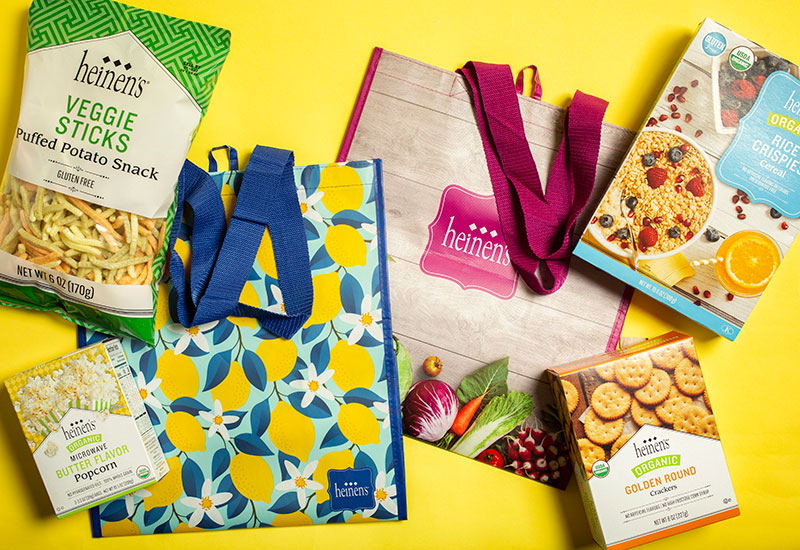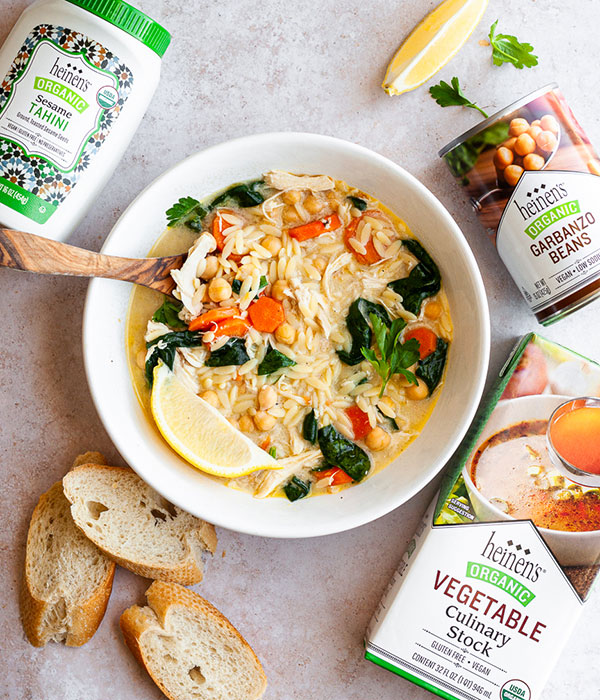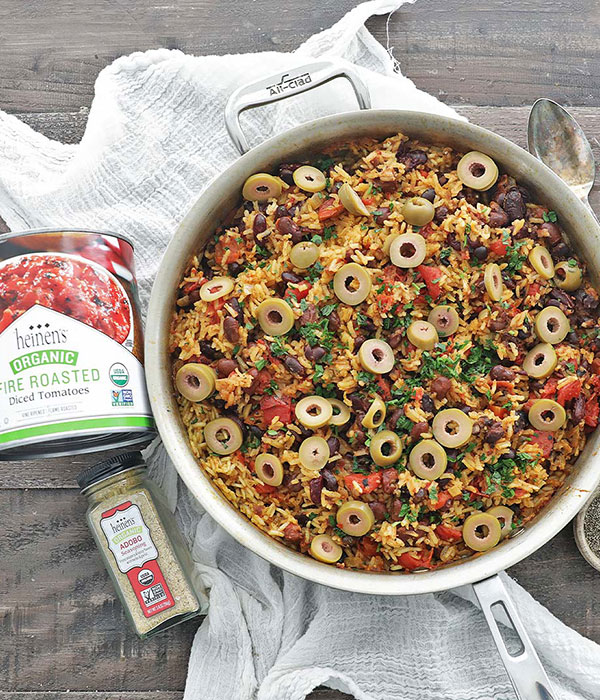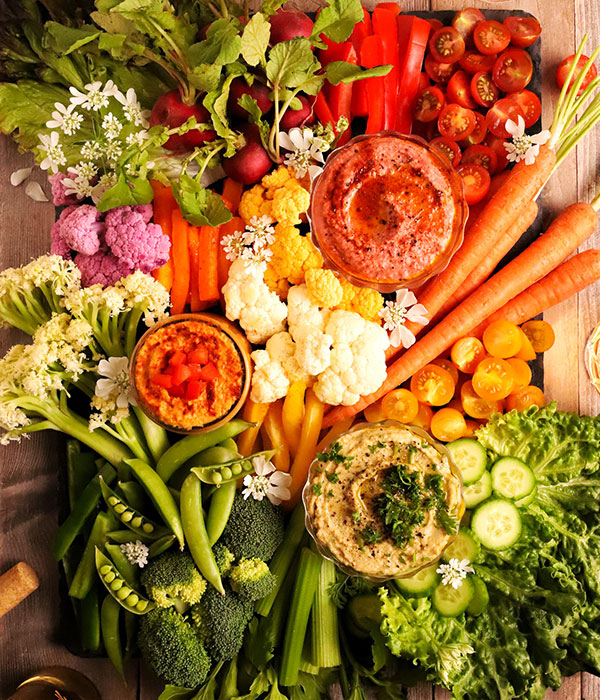10 Easy Ways to Save on Your Next Trip to Heinen’s

This post was provided courtesy of local cookbook author and chef, Carla Snyder. Learn more about Carla at Ravenouskitchen.com.
There are two basic facts that most people recognize today. First, just about everything costs more than it did a year ago, and second, most of us aren’t making any extra money to cover those expenses.
We are all looking for ways to save and though we may not be able to reduce a mortgage or rent payment, a good place to start is the food budget. According to the U.S. Bureau of Labor Statistics, food is the largest household expense after housing and transportation, topping out at about $7,500 a year. Fortunately, unlike housing and transportation, food is generally easy to adapt to your budget.
Read on for 10 budget friendly strategies to save on your family’s food bills.
1. Set up a Food Budget
I know, I know. It already sounds difficult. But by first figuring out how much money you are actually spending, you will be able to gauge what you need and don’t need, allowing those saved dollars to grow in something like a vacation fund.
Remember, the food budget also includes restaurant meals, which run about $20 per person on average. Cooking at home more and eating out less should be the goal for all of us, creating a healthier bottom line as well as healthier families. Start out with small cuts to non-essentials and, since you’ve been thoughtful enough to make that budget, stick with it.
2. Try Not to Waste Food
This sounds like a no brainer, but we have all been guilty of over buying and wasting food. Planning meals is key and I find that planning and shopping 3 or 4 days of meals is a great start. It still gives you some flexibility if something comes up and you are out for a night or two. Planning a whole week of meals usually means there will be more waste because, let’s face it, sometimes life doesn’t go as planned.
To preserve freshness, keep vegetables wrapped in the plastic bags in crisper drawers in the fridge and freeze proteins such as chicken, beef, fish and pork in Heinen’s freezer friendly packaging. You can also divide them into portions that work for your family and then freeze. Stock up on pantry items like canned and dried beans, rice, canned tomatoes, canned broth and potatoes and in the fridge, always have eggs, some cheese, carrots, celery, apples and greens. That way, you can always make something delicious for dinner without having to go to the store in between shops. And finally, work to incorporate leftovers into the next meal. Perhaps you have a little chicken left over from the night before. There’s not enough to serve everyone for a main course but there’s plenty to top a salad or to fortify a soup. Be creative!

3. Buy Heinen’s Brand Items and Use Your Tasteful Rewards Card
On average, generic and store brands can save you as much as 10 to 30% with no loss of quality or taste and in many cases the store brand labels are made by the same companies who manufacture the name-brand label. Heinen’s brand is no exception.
Additionally, using Heinen’s Tasteful Rewards card automatically registers sale prices when you check out and even offers personalized rewards on items you regularly buy. Always use your rewards card at checkout and if you don’t have it, just give the cashier your phone number. It’s free money!
4. Buy Sale and Bulk Items and Cook and Freeze the Extra Meals for Another Time
Buying sale and bulk items can really save you money, and with fewer meals to plan and cook, you will also save tons of time. Make it a habit to check Heinen’s Weekly Ad online each week for all kinds of deals on your favorite products.
The easiest meals to make ahead and freeze also happen to be one-pan meals such as soups and stews, which are also very efficiently frozen and reheated. Pack them in freezer bags in individual servings and keep in the freezer for up to 2 months. If you can stretch 2 meals into 4 each week, you’re saving time and money, which is brilliant.

5. Look into Curbside Pickup
If you have a hard time sticking to the list when shopping, think about having Heinen’s shop your list for you and then just pick them up, already bagged and thereby avoiding the delivery fee. No stress.
6. Cut Back on Convenience Shopping
Convenience items are things like individually packaged chips or pretzels, cut up chicken or pre-sliced carrots and apples. We all buy convenience items, but it makes sense to think about if that convenience is worth the money to you. Perhaps cutting up a whole chicken (which costs less than a pre-cut chicken) is worth the savings to you. Or bag pretzels for the kids lunch instead of buying the snack packs. Try swapping out one convenience item at a time and those savings will begin to add up. Remember, baby steps.

7. Go Meatless Once or Twice a Week
This might be a hard sell if you and your family are die-hard carnivores, but going meatless even once a week has tremendous benefits for heart health. There are lots of options for vegetable-based protein such as beans and legumes (which happen to be inexpensive), and who doesn’t love a big pasta dinner with fresh in-season tomatoes?
Summer is a great time to go meatless as many of us eat a little lighter in warmer weather anyway. Plan big healthy salads with colorful seasonal produce and add chickpeas, lentils or tofu for protein or just a few ounces of chicken, beef or fish to top it off if you must. When paired with a nice loaf of country-style bread and lovely butter, this type of meal can really satisfy.
8. Take Stock of What you Have
Check your pantry, back of the refrigerator and recesses of the freezer for items that can be used up or combined with fresh items from the store. Use up canned items like beans and tomatoes in soups and stews and combine with celery, carrots and onions from the crisper bins.
One of the best reasons to check your pantry weekly is that you won’t purchase things you already have. Make an effort to use up all the rice, lentils and dried beans for a few of those meatless meals (see above).

9. Simplify your Grocery List with a Four-Section Grid
Make a strategic list according to the layout of the store. Start with produce in the upper left corner of the list followed by pantry staples below. In the upper right corner are the meats, fish and dairy with frozen items below. This way, you won’t have to go back and forth between departments. One efficient sweep through the store and you are on your way home.
10. Cook Seasonally and Simply
Seasonal produce is usually less expensive with the added benefit that you have the ability to shop locally grown produce as well. Seasonal and local is often the most delicious as well, so it’s a big win-win. Stock up on fruit and vegetables with a focus on eating simply since the freshest produce needs very little to make it taste amazing. Think sliced tomatoes dressed with oil and vinegar, corn on the cob with butter, grilled zucchini, sweet pepper and eggplant, or greens with a simple vinaigrette. You get the picture.

There you have it. An (almost) pain-free method for reducing your grocery bill. Start slowly and try to incorporate one or two changes into your lifestyle per month. As grocery prices continue to change, shopping with a plan can save you money each time you make a grocery run, adding up to substantial savings over the weeks, months and year.
By shopping strategically and resourcefully you can have healthy, tasty meals and save money at the same time. Here’s to that vacation fund and good luck!


